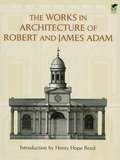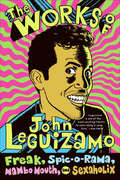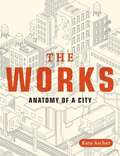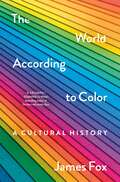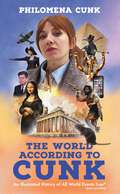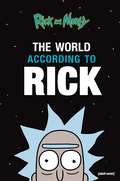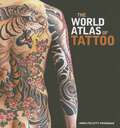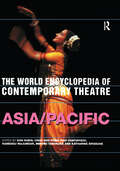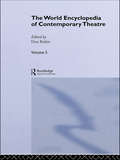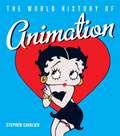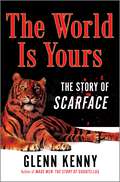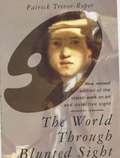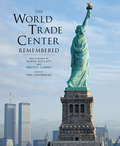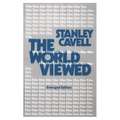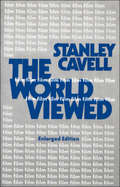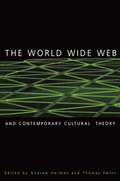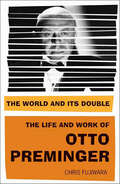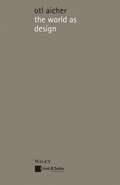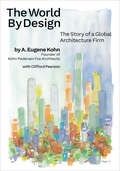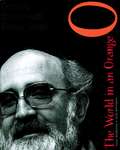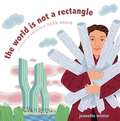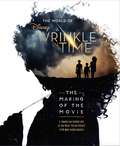- Table View
- List View
The Works in Architecture of Robert and James Adam (Dover Architecture)
by James Adam Robert Adam Henry Hope ReedThe Palladian style dominated British architecture for most of the 1700s, until the rise of the Adam style, which held sway for the final decades of the eighteenth century. Brothers Robert and James Adam were almost single-handedly responsible for infusing Georgian architecture with the sensibilities and elements of classical Hellenic and Latinate design. Their elegant, sophisticated form of Neoclassicism affected not only architecture, but also interior design, furniture design, and landscaping.The Works in Architecture of Robert and James Adam, one of the most celebrated books in architectural history, consists of the brothers' own selections of illustrations from their commissions. Dating from the 1770s, these 106 illustrated plates epitomize the style that influenced generations of British and American architectural and furniture designs. Created by some of the finest commercial engravers of the age -- including four plates by Piranesi -- these illustrations are painstakingly reproduced in perfect detail and clarity. The original text imparts the Adams' own esthetic and practical aims, and an informative introduction places the brothers' work in historical perspective.
The Works of John Leguizamo: Freak, Spic-o-rama, Mambo Mouth, and Sexaholix
by John LeguizamoThis volume collects all four of the writer-performer’s legendary, award–winning solo shows.John Leguizamo rose to stardom with a series of critically acclaimed solo shows in which he embodied a diverse cast of unforgettable characters. Now all four of these classic theatrical works—Freak, Spic-o-Rama, Mambo Mouth, and Sexaholix—are available in this one essential volume.Mambo Mouth Leguizamo’s first show was an Off-Broadway sensation. In it, he portrayed seven different Latino characters in a bravura performance that earned him both Obie and Outer Critics Circle awards. Spic–O–Rama A “dysfunctional family comedy,” presents 24–hours in the life of one family. It enjoyed a sold–out run in Chicago before relocating to New York where it won its creator a Drama Desk Award. Freak Leguizamo’s Broadway debut tells his own coming–of–age story. A “demi–semi–quasi–pseudo–autobiography,” which went on to become an Emmy special on HBO. Sexaholix: A Love Story Leguizamo’s “raunchy-yet-sweet comic solo performance”—a hit on both Broadway and HBO—explores his own coming of age as he transforms into a father and family man (Washington Post).
The Works: Anatomy Of A City
by Kate Ascher Wendy Marech Alexander Isley IncA fascinating guided tour of the ways things work in a modern city Have you ever wondered how the water in your faucet gets there? Where your garbage goes? What the pipes under city streets do? How bananas from Ecuador get to your local market? Why radiators in apartment buildings clang? Using New York City as its point of reference, The Works takes readers down manholes and behind the scenes to explain exactly how an urban infrastructure operates. Deftly weaving text and graphics, author Kate Ascher explores the systems that manage water, traffic, sewage and garbage, subways, electricity, mail, and much more. Full of fascinating facts and anecdotes, The Works gives readers a unique glimpse at what lies behind and beneath urban life in the twenty-first century.
The World According to Color: A Cultural History
by James FoxA kaleidoscopic exploration that traverses history, literature, art, and science to reveal humans' unique and vibrant relationship with color.We have an extraordinary connection to color—we give it meanings, associations, and properties that last millennia and span cultures, continents, and languages. In The World According to Color, James Fox takes seven elemental colors—black, red, yellow, blue, white, purple, and green—and uncovers behind each a root idea, based on visual resemblances and common symbolism throughout history.Through a series of stories and vignettes, the book then traces these meanings to show how they morphed and multiplied and, ultimately, how they reveal a great deal about the societies that produced them: reflecting and shaping their hopes, fears, prejudices, and preoccupations.Fox also examines the science of how our eyes and brains interpret light and color, and shows how this is inherently linked with the meanings we give to hue. And using his background as an art historian, he explores many of the milestones in the history of art—from Bronze Age gold-work to Turner, Titian to Yves Klein—in a fresh way. Fox also weaves in literature, philosophy, cinema, archaeology, and art—moving from Monet to Marco Polo, early Japanese ink artists to Shakespeare and Goethe to James Bond. By creating a new history of color, Fox reveals a new story about humans and our place in the universe: second only to language, color is the greatest carrier of cultural meaning in our world.
The World According to Cunk: An Illustrated History of All World Events Ever, Space Permitting
by Philomena CunkRomans! Madrigals! The Dark Ages! Evolutions! Trumpets! The Oranges of The First World War!All of this (except trumpets) and more is covered in this definitive, illustrated, easy-clean history of all world history so far, written by the twenty-first century's leading historian, philosopher and thought-thinker, Philomena Cunk.Focusing on the inventions, art and brainboxes that made the modern world the unbearable place it is today, The World According to Cunk is the history book to end all history books. From the birth of the first baby caveman to the invention of the poo emoji. Some say history is written by the Victors. But they're wrong - it's written by the Philomenas. Well, a Philomena. The one on the cover. Yes, her, from TikTok
The World According to Rick (A Rick and Morty Book)
by Rick Sanchez Matt CarsonA must-have gift book: the wit, wisdom, and frequent diatribes of mad scientist Rick Sanchez of Adult Swim's Rick and Morty, the Emmy-winning, #1 animated series on TV.Finally, from the self-appointed "Most Intelligent Being in the Multiverse" Rick Sanchez of Rick and Morty: a mind-bending collection of his innate and acquired wisdom. Each season, Rick and his grandson Morty embark on thrilling earthly and intergalactic adventures, all for the benefit of science (and Rick's inflated ego). But what makes the depraved genius tick? Now Rick is eager to impart his unique (and sometimes disturbing) take on life, love, and everything in-between for the benefit of aspiring mad scientists everywhere.Fully illustrated with color images from the show, The World According to Rick is a collection of Rick's most famous (and not so famous) sayings, monologues, and quotes, complete with a personal introduction by the mad man himself. A truly unique and special book, this collectible is sure to become a cult favorite like the show that inspired it.RICK AND MORTY, ADULT SWIM, the logos, and all related characters and elements are trademarks of and (c) 2018 Cartoon Network.
The World Atlas of Tattoo
by Anna Felicity FriedmanTattoo art and practice has seen radical changes in the 21st century, as its popularity has exploded. An expanding number of tattoo artists have been mining the past for lost traditions and innovating with new technology. An enormous diversity of styles, genres, and techniques has emerged, ranging from geometric blackwork to vibrant, painterly styles, and from hand-tattooed works to machine-produced designs. With over 700 stunning color illustrations, this volume considers historical and contemporary tattoo practices in Europe, the Americas, the Middle East, North and Sub-Saharan Africa, Asia, Australia, and the Pacific Islands. Each section, dedicated to a specific geographic region, features fascinating text by tattoo experts that explores the history and traditions native to that area as well as current styles and trends. The World Atlas of Tattoo also tracks the movement of styles from their indigenous settings to diasporic communities, where they have often been transformed into creative, multicultural, hybrid designs. The work of 100 notable artists from around the globe is showcased in this definitive reference on a widespread and intriguing art practice.
The World Encyclopedia of Contemporary Theatre: Volume 5: Asia/Pacific
by Ravi Chaturvedi Don Rubin Katherine Brisbane Ramendu Majumdar Chua Soo Pong Minoru TanokuraThis new paperback edition provides a unique examination of theatre in Asia and the Pacific and is written by leading experts from within the countries covered. Its far-reaching scope and broad interpretation of theatre (to include all types of performance) set it apart from any other similar publication. Entries on 33 Asian countries are featured in this volume, preceded by introductory essays on Asian Theatre, Theatre in the Pacific, History and Culture, Cosmology, Music, Dance, Theatre for Young Audiences, Mask Theatre and Puppetry.The volume contains approximately 300,000 words and includes national essays of up to 25,000 words each. The countries include:Afghanistan * Australia * Bangladesh * Bhutan * Brunei * Cambodia * India * Indonesia * Iran * Japan * Kazakhstan *Kirghizia * Laos * Malaysia * Myanmar * Mongolia * Nepal *New Zealand * Pakistan * Papua New Guinea * PhilippinesNew Zealand * Pakistan * Papua New Guinea * Philippines *Singapore * South Korea * South Pacific * Sri Lanka * Tadjikistan * Thailand * Turkmenistan * Vietnam
The World Encyclopedia of Contemporary Theatre: Volume 5: Asia/Pacific
by Don RubinThis volume featrues over 250,000 words and more than 125 photographs identifying and defining theatre in more than 30 countries from India to Uzbekistan, from Thailand to New Zealand and featuring extensive documentation on contemporary Chinese, Japanese, Indian and Australian theatre.
The World History of Animation
by Stephen CavalierLavishly illustrated and encyclopedic in scope, this book tells the genre’s 100-year-old story around the globe, featuring key players in Europe, North America, and Asia. From its earliest days, animation has developed multiple iterations and created myriad dynamic styles, innovative techniques, iconic characters, and memorable stories. Stephen Cavalier’s comprehensive account is organized chronologically and covers pioneers, feature films, television programs, digital films, games, independent films, and the web. An exhaustive time line of films and innovations acts as the narrative backbone, and must-see films are listed along with synopses and in-depth biographies of individuals and studios. The book explains the evolution of animation techniques, from rotoscoping to refinements of cel techniques, direct film, claymation, and more. A true global survey, this book is an exciting and inspirational journey through the large and still-expanding animation universe—a place as limitless as the human imagination.
The World Is Yours: The Story of Scarface
by Glenn KennyThe behind-the-scenes story of the iconic film Scarface, featuring new interviews with the cast and crew. An unflinching confrontation of humanity&’s dark side, Brian De Palma&’s crime drama film Scarface gave rise to a cultural revolution upon its release in 1983. Its impact was unprecedented, making globe-spanning waves as a defining portrait of the gritty Miami street life. From Al Pacino&’s masterful characterization of Tony Montana to the iconic &“Say hello to my little friend,&” Scarface maintains its reputation as an unwavering game changer in cult classic cinema. With brand-new interviews and untold stories of the film&’s production, longtime film critic Glenn Kenny takes us on an unparalleled journey through the making of American depictions of crime. The World Is Yours highlights the influential characters and themes within Scarface, reflecting on how its storied legacy played such a major role in American culture.
The World Through Blunted Sight: An Inquiry into the Influence of Defective Vision on Art and Character
by Patrick Trevor-RoperA British ophthalmologist discusses his impressions of visually-impaired artists, including a number of the Impressionists.
The World Trade Center Remembered
by Sonja BullatyA stirring photographic tribute to the World Trade Center towers, which were the icons of the New York City skyline, available as an e-book for the first time. Rising dramatically above all other skyscrapers at the tip of Manhattan, the World Trade Center symbolized New York. From any direction the Towers were lodestars, Manhattan's local mountains. Nearly a decade after the dark events of 9/11, New Yorkers continue to come to terms with the tragedy, and to reminisce about the views of the Towers they once had from their homes and offices. Visitors, too, are remembering how the WTC looked as they approached Manhattan by car, plane, or from the water. As we mourn for the terrible loss of life, we also want to remember. The 72 images of the World Trade Center presented in this book depict a New York we once knew, one we are now working to rebuild. For more than two decades, practically since the Twin Towers were erected, Sonja Bullaty and Angelo Lomeo have been photographing these awesome buildings. The pictures featured here portray the WTC from all directions, starting with views from the east at dawn, and ending with evening views from the west. There are captivating panoramas from Brooklyn, Lower Manhattan, New Jersey, and uptown, taken in all seasons, as well as a section showing the grand Plaza at the center of the buildings. Together, they create an unforgettable portrait of the Twin Towers. Introducing this extraordinary collection of photographs, Paul Goldberger's text evokes the Towers and the city they came to symbolize. He recalls how they evolved in the public mind, targets of criticism to beloved American icons. He explains their architectural significance and explores their visceral meaning to New Yorkers. In contrast to books depicting the disaster and the days following it, this photographic memoir will be welcomed by all of us? New Yorkers and visitors alike ? who yearn to remember the way the city was.
The World Viewed: Reflections on the Ontology of Film
by Stanley CavellStanley Cavell looks closely at America's most popular art and our perceptions of it. His explorations of Hollywood's stars, directors, and most famous films--as well as his fresh look at Goddard, Bergman, and other great European directors--will be of lasting interest to movie-viewers and intelligent people everywhere.
The World Viewed: Reflections on the Ontology of Film, Enlarged Edition (Harvard Film Studies (hup) Ser.)
by Stanley CavellStanley Cavell looks closely at America’s most popular art and our perceptions of it. His explorations of Hollywood’s stars, directors, and most famous films—as well as his fresh look at Godard, Bergman, and other great European directors—will be of lasting interest to movie-viewers and intelligent people everywhere.
The World Wide Web and Contemporary Cultural Theory: Magic, Metaphor, Power
by Andrew Herman Thomas SwissEngaging the thematic issues of the Web as a space where magic, metaphor, and power converge, the chapters cover such subjects as The Web and Corporate Media Systems, Conspiracy Theories and the Web; The Economy of Cyberpromotion, The Bias of the Web, The Web and Issues of Gender, and so on.
The World and Its Double: The Life and Work of Otto Preminger
by Chris FujiwaraOtto Preminger was one of Hollywood's first truly independent producer/directors. He sought to address the major social, political, and historical questions of his time in films designed to appeal to a wide public. Blazing a trail in the examination of controversial issues such as drug addiction (The Man with the Golden Arm) and homosexuality (Advise and Consent) and in the frank, sophisticated treatment of adult material (Anatomy of a Murder), Preminger in the process broke the censorship of the Hollywood Production Code and the blacklist. He also made some of Hollywood's most enduring film noir classics, including Laura and Fallen Angel.An Austrian émigré, Preminger began his Hollywood career in 1936 as a contract director. When the conditions emerged that led to the fall of the studio system, he had the insight to perceive them clearly and the boldness to take advantage of them, turning himself into one of America's most powerful filmmakers. More than anyone else, Preminger represented the transition from the Hollywod of the studios to the decentralized, wheeling and dealing New Hollywood of today. Chris Fujiwara's critical biography--the first in more than thirty years--follows Preminger throughout his varied career, penetrating his carefully constructed public persona and revealing the many layers of his work.
The World as Design
by Otl AicherOtl Aicher's writings are explorations of the world, a substantive part of his work. In moving through the history of thought and design, building and construction, he assures us of the possibilities of arranging existence in a humane fashion. As ever he is concerned with the question of the conditions needed to produce a civilised culture. These conditions have to be fought for against apparent factual or material constraints and spiritual and intellectual substitutes on offer. Otl Aicher likes a dispute. For this reason, the volume contains polemical statements on cultural and political subjects as well as practical reports and historical exposition. He fights with productive obstinacy, above all for the renewal of Modernism, which he claims has largely exhausted itself in aesthetic visions; he insists the ordinary working day is still more important than the "cultural Sunday". Wolfgang Jean Stock
The World by Design: The Story of a Global Architecture Firm
by A. Eugene Kohn Clifford PearsonSharing stories and inspiring lessons on leadership and design, one architect explains how he helped build one of the world&’s most successful firms Founded on July 4, 1976, Kohn Pedersen Fox quickly became a darling of the press with groundbreaking buildings such as the headquarters for the American Broadcasting Company (ABC) in New York, 333 Wacker Drive in Chicago, the Procter & Gamble headquarters in Cincinnati, and the World Bank Headquarters in Washington, DC. By the early 1990s, when most firms in the U.S. were struggling to survive a major recession, KPF was busy with significant buildings in London, Germany, Canada, Japan, Korea, and Indonesia—pioneering a model of global practice that has influenced architecture, design, and creative-services firms ever since. Like any other business, though, KPF has stumbled along the way and wrestled with crises. But through it all, it has remained innovative in an ever-changing field that often favors the newest star on the horizon. Now in its fifth decade, the firm has shaped skylines and cities around the world with iconic buildings such as the World Financial Center in Shanghai, the International Commerce Centre in Hong Kong, the DZ Bank Tower in Frankfurt, the Heron Tower in London, and Hudson Yards in New York. Forthright and engaging, Kohn examines both award-winning achievements and missteps in his 50-year career in architecture. In the process, he shows how his firm, KPF, has helped change the buildings and cities where we live, work, learn, and play.&“A must-read for all of those who love cities and the buildings and skylines that define them.&” —Stephen M. Ross, chairman and founder of The Related Companies
The World in an Orange: Creating Theatre with Barney Simon
by Jane Fox Lionel Abrahams Leila Henriques Irene StephanouBarney Simon (1932-1995) was the legendary artistic director, writer, and co-creator ofthe Market Theatre in Johannesburg, one of the most influential and distinguished theatres in South Africa and the world. He workshopped, wrote, and directed unforgettable and pertinent plays in his quest to "hold a mirror up high to society." These works stand as a testament to South Africa's recent history. Here are 80 testaments from international artists about Barney's often mysterious creative process. Barney was especially known for his famous "orange exercise." Through a single orange, he communicated lessons of detail,care, and respect. With full-color illustrations throughout, this is an essential book for students and teachers of theatrical expression, and indeed for anyone who strives to understand their own voice. With the passing of a decade of democracy in South Africa, The World in an Orange is a record of the last years of apartheid and the role of the arts community in bringing it down.
The World is Not a Rectangle A Portrait of Architect Zaha Hadid: A Portrait Of Architect Zaha Hadid
by Jeanette WinterGet to know Zaha Hadid in this nonfiction picture book about the famed architect's life and her triumph over adversity from celebrated author-illustrator Jeanette Winter. Zaha Hadid grew up in Baghdad, Iraq, and dreamed of designing her own cities. After studying architecture in London, she opened her own studio and started designing buildings. But as a Muslim woman, Hadid faced many obstacles. Determined to succeed, she worked hard for many years, and achieved her goals--and now you can see the buildings Hadid has designed all over the world.
The World of A Wrinkle in Time: The Making of the Movie
by Disney Kate EganTravel through time and space on an epic adventure with Disney's major motion picture A Wrinkle in Time!This keepsake book takes readers behind the scenes of Disney's film adaptation of Madeleine L'Engle's timeless novel. Complete with interviews and photographs of the cast and crew, it's an exclusive look at the film's production perfect for moviegoers and fans of the iconic book. Discover how acclaimed director Ava DuVernay brought the story to the silver screen; hear firsthand how stars like Oprah Winfrey, Reese Witherspoon, and Mindy Kaling were transformed into characters; see how sets were built and locations scouted. And discover how one young girl, Meg Murry, finds strength in her flaws, saves her family, and learns that the best way to triumph over fear is to travel by her own light.A Wrinkle in Time by Madeleine L'Engle is one of the most beloved children's books of our era, and the major motion picture from Walt Disney Studios brings it alive for both lifelong lovers of the story and a new generation of fans.
The World of All Souls: A Complete Guide to A Discovery of Witches, Shadow of Night and The Book of Life
by Deborah HarknessDiscover the truths, the history, the myths and the magic behind the bestselling All Souls trilogy. Fall under the spell once more with this all-encompassing insider's guide to A Discovery of Witches, Shadow of Night and The Book of Life. The All Souls trilogy by Deborah Harkness, featuring historian and witch Diana Bishop and vampire scientist Matthew Clairmont, delves into mythology, alchemy, literature and architecture. And history is brought to life. With her signature historian's touch, Deborah Harkness offers an encyclopaedic look at the series, complete with synopses, character biographies, maps, recipes, and even the science behind creatures, magic and alchemy. Bursting with fascinating facts and original artwork, The World of All Souls is the ultimate companion for fans of the All Souls trilogy and unlocks this fantastical world, letting you in on all its secrets and mysteries. Praise for the All Souls trilogy: 'This is a glorious, finely-wrought gem of a book: intelligent, thoughtful, intricate. . . Utterly enchanting on every level' Manda Scott on A DISCOVERY OF WITCHES 'Deborah Harkness writes as if she's the hugely more talented love child of Diana Gabaldon and J. K. Rowling' thebookbag.co.uk on SHADOW OF NIGHT 'Rich in arcane detail, fans will relish this exotic cauldron of romantic fantasy' Sunday Mirror on THE BOOK OF LIFE
The World of All Souls: A Complete Guide to A Discovery of Witches, Shadow of Night and The Book of Life
by Deborah HarknessDiscover the truths, the history, the myths and the magic behind the bestselling All Souls trilogy. Fall under the spell once more with this all-encompassing insider's guide to A Discovery of Witches, Shadow of Night and The Book of Life. The All Souls trilogy by Deborah Harkness, featuring historian and witch Diana Bishop and vampire scientist Matthew Clairmont, delves into mythology, alchemy, literature and architecture. And history is brought to life. With her signature historian's touch, Deborah Harkness offers an encyclopaedic look at the series, complete with synopses, character biographies, maps, recipes, and even the science behind creatures, magic and alchemy. Bursting with fascinating facts and original artwork, The World of All Souls is the ultimate companion for fans of the All Souls trilogy and unlocks this fantastical world, letting you in on all its secrets and mysteries. Praise for the All Souls trilogy: 'This is a glorious, finely-wrought gem of a book: intelligent, thoughtful, intricate. . . Utterly enchanting on every level' Manda Scott on A DISCOVERY OF WITCHES 'Deborah Harkness writes as if she's the hugely more talented love child of Diana Gabaldon and J. K. Rowling' thebookbag.co.uk on SHADOW OF NIGHT 'Rich in arcane detail, fans will relish this exotic cauldron of romantic fantasy' Sunday Mirror on THE BOOK OF LIFE(P)2018 Penguin Random House Audio
The World of Assassin's Creed Valhalla: Journey to the North--Logs and Files of a Hidden One
by Rick BarbaA full-color, oversized hardcover tome that chronicles Viking culture, history, lore, and mythology amid the action and drama of Assassin&’s Creed Valhalla.Ubisoft and Dark Horse Books present The World of Assassin's Creed Valhalla, a journal kept by Hytham himself, which allows readers to experience Assassin&’s Creed Valhalla as they've never seen before.Discover the history and culture of the Raven Clan Vikings as they struggle against the Order of the ancients. Get an in-depth view at the setting of the game with descriptions and depictions of in-game characters and locals as the Vikings move from Norway to England, Ireland, and Francia. What best-kept secrets will you uncover at Hytham&’s side?
